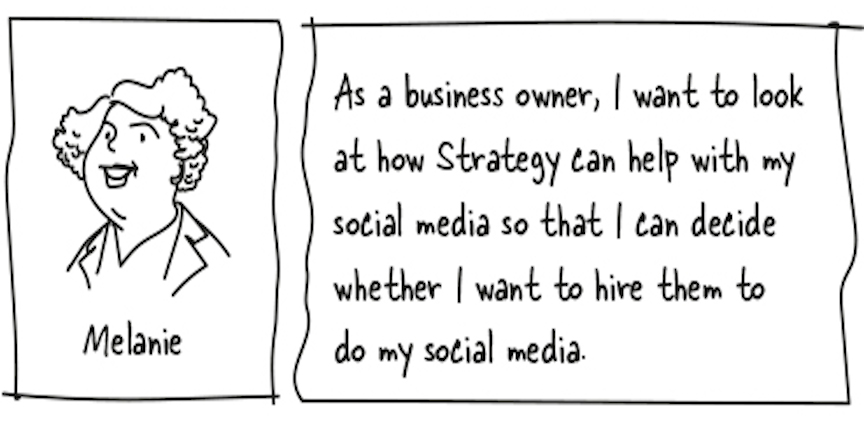User stories – what’s the use?

The first step of building or restructuring a website, application or piece of software is to think about the potential users – who they are, what they need and why they need it. These user stories are part of the discovery phase of the Agile approach to development and here at Strategy, we use them regularly to inform and drive our projects.
For the purposes of this post, we will focus on how user stories are useful when building or restructuring a website.
Writing user stories
When writing user stories for a website, there are three questions you need to consider:
1. Who are the visitors to your site?
2. What do they want to do on your site?
3. Why do they want to do it?
For example, when we were building our website, we identified one user as ‘a potential client who is visiting our site to find out about the company to decide whether or not they want to hire us.’
This is quite a broad user story, and includes many types of potential client who could be looking for many types of information. A broad user story that can be broken down into smaller user stories is called an ‘epic’.
Once you’ve got this ‘epic’, you can start to break it up into smaller, more specific user stories, such as: ‘a potential client who wants help with social media who is visiting our site to find out about the company and its experience with social media to decide whether or not they want to hire us.’
User stories are usually written in a specific way, and contain the following:
‘As a’ – the person you’re talking about
‘I want’ – what that person wants to do
‘so that’ – why they want to do it
So the above example would be written as:
‘As a business owner, I want to look at how Strategy can help with my social media so that I can decide whether I want to hire them to do my social media.’
You can even take this a step further and give each user a name and even their own image. This makes it easier to discuss the different users and helps make them more real for the team.

Refining user stories
The key to writing good user stories is to keep evaluating and refining them throughout the project lifecycle, for example, by getting feedback on the user stories from the client and the whole team. It is also important to ensure that you are not missing anything out by combining two or more user stories into one, or being repetitive by writing the same user story more than once in a slightly different way.
If you want to be really systematic about it (and at Strategy, we like to leave no stone unturned), you can write ‘acceptance criteria’ for each user story. These criteria define when a user story is complete. For example, in the case above, there might be three acceptance criteria:
‘It is done when there is information on the website about Strategy’s past experience with social media’ .
‘It is done when there is information on the website about how Strategy can help with social media’ .
‘It is done when there is a way for the client to contact Strategy’ .
Writing user stories is a fantastic way to think about and keep a record of your users. Once you’ve got a suggested wireframe for your site, you can then refer back to the user stories and evaluate whether or not the proposed site is achieving the goals of those users, or go back to your acceptance criteria to decide whether they have been met. You can also measure the number of clicks it takes each user to reach their goal.
Storing user stories
At Strategy, we like to take an integrative approach. This means we might write the user stories on index cards, then upload them to Trello for the whole team to look at, and then put them back on card so they can be stuck on the whiteboard and moved around.
Identifying which users are a priority for a website is also part of the process as some stories are usually more important than others. Once we’ve got the user stories and ordered them in terms of priority, we can build a website that suits these priority users, without forgetting the other users.

User stories and your website
By defining each user and creating their story, we can help get to the bottom of what exactly your website wants to achieve. Sometimes you may think this is obvious, but the process of creating these stories often brings up users that you hadn’t previously thought about.
Once created, the user stories are used by all strands of the Strategy team and influence everything from the way the website is built to the messaging used on the site.
Want to understand your website's users? Get in touch and let us do the work for you.

Comments